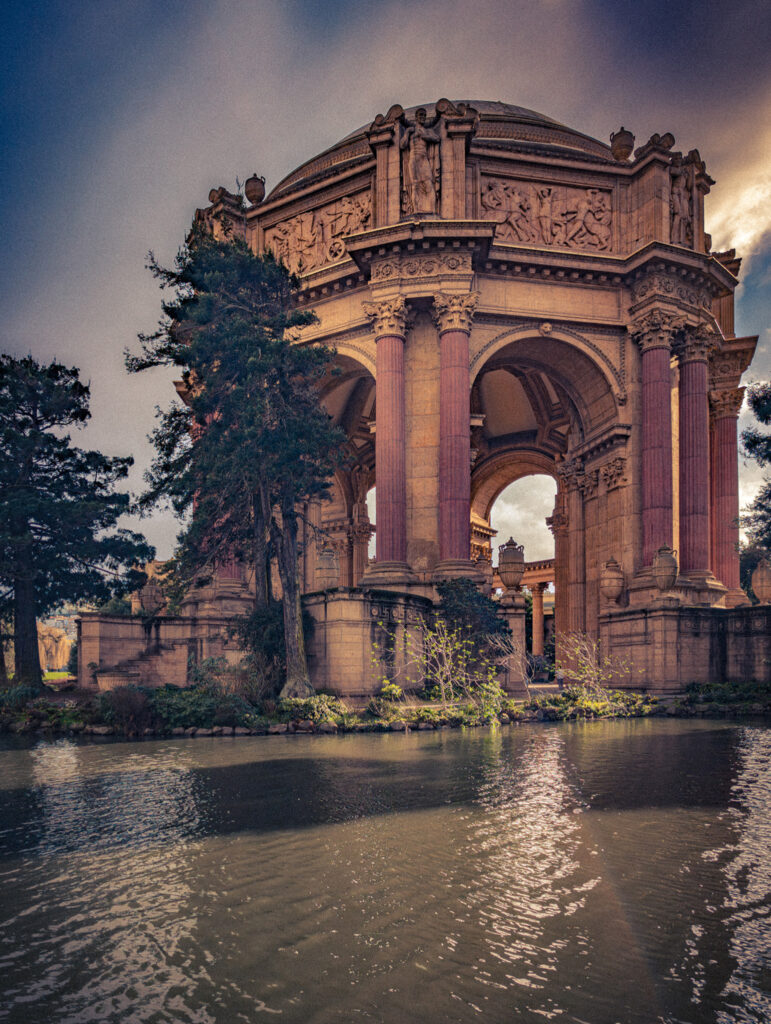
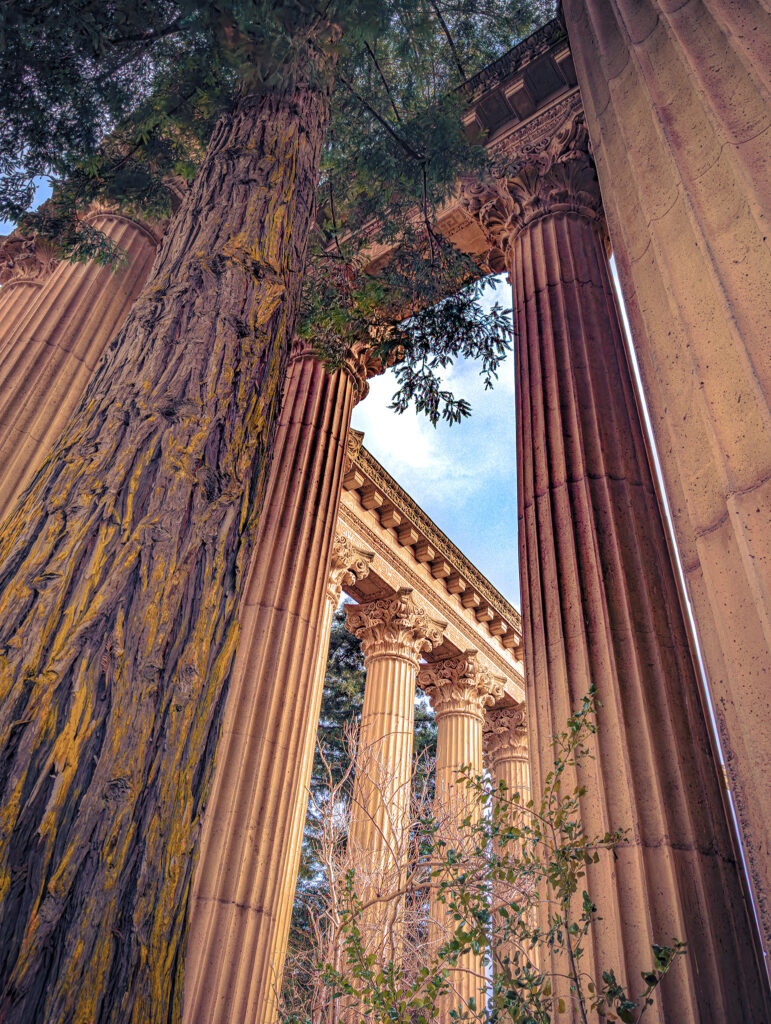

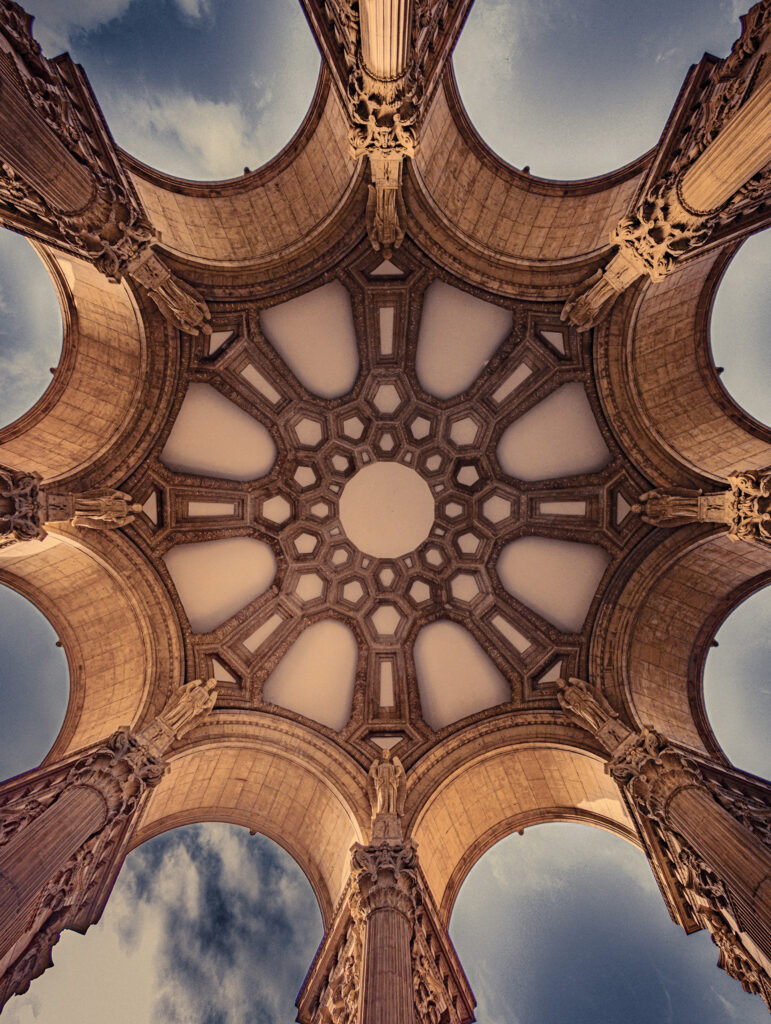
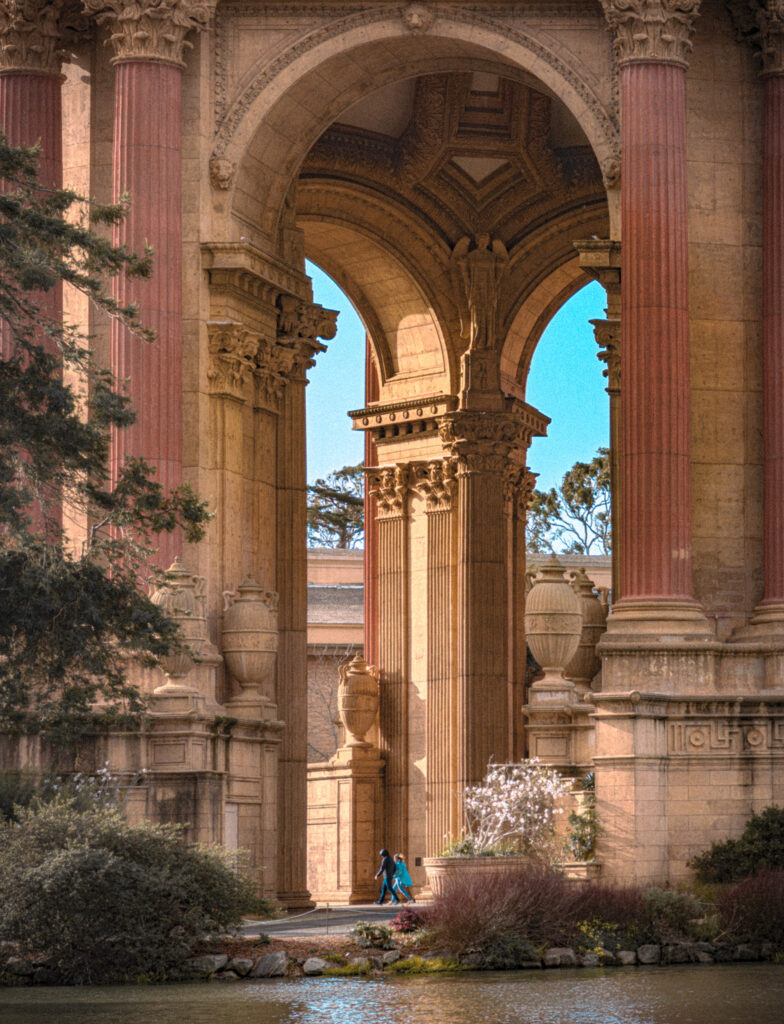

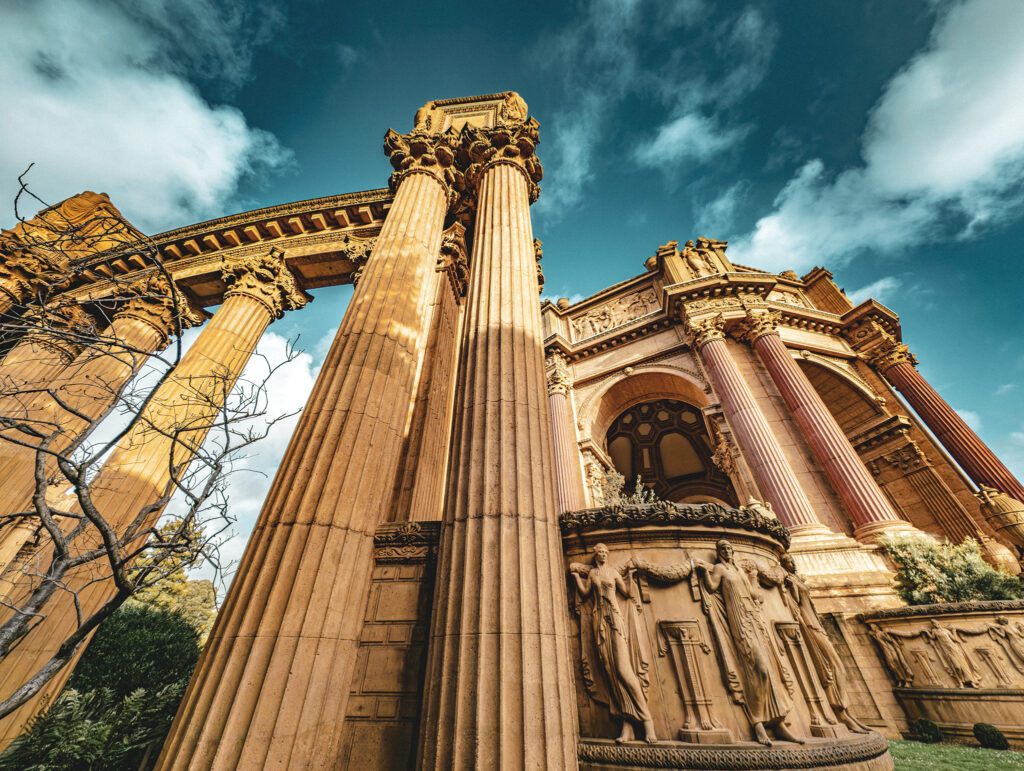
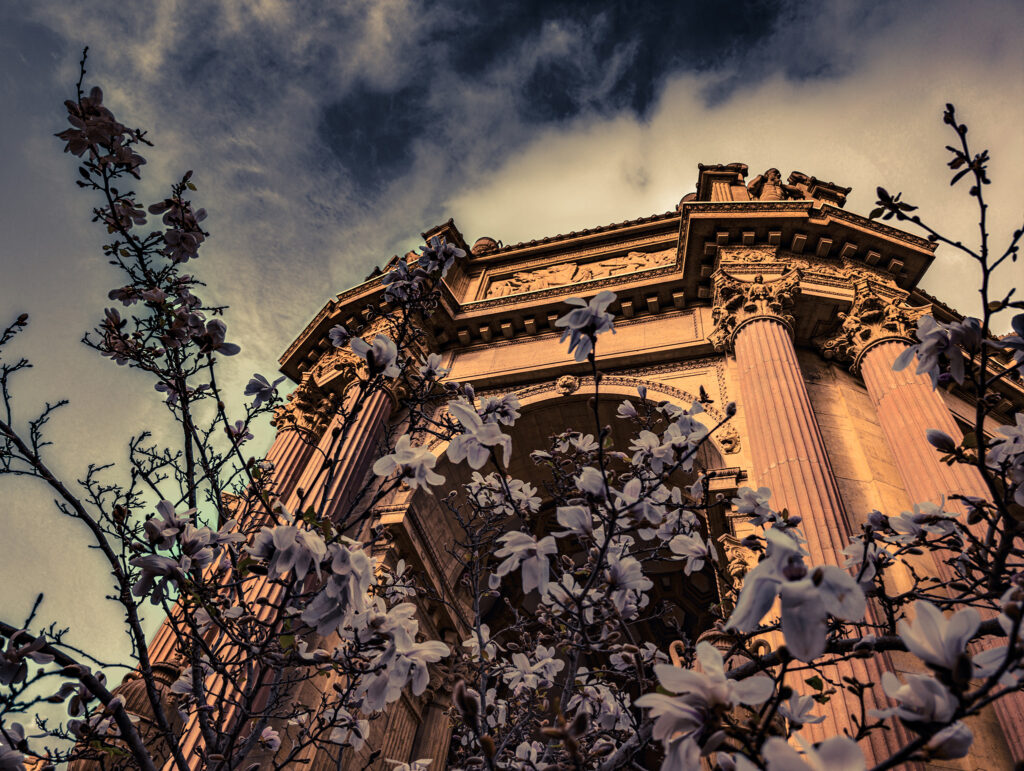
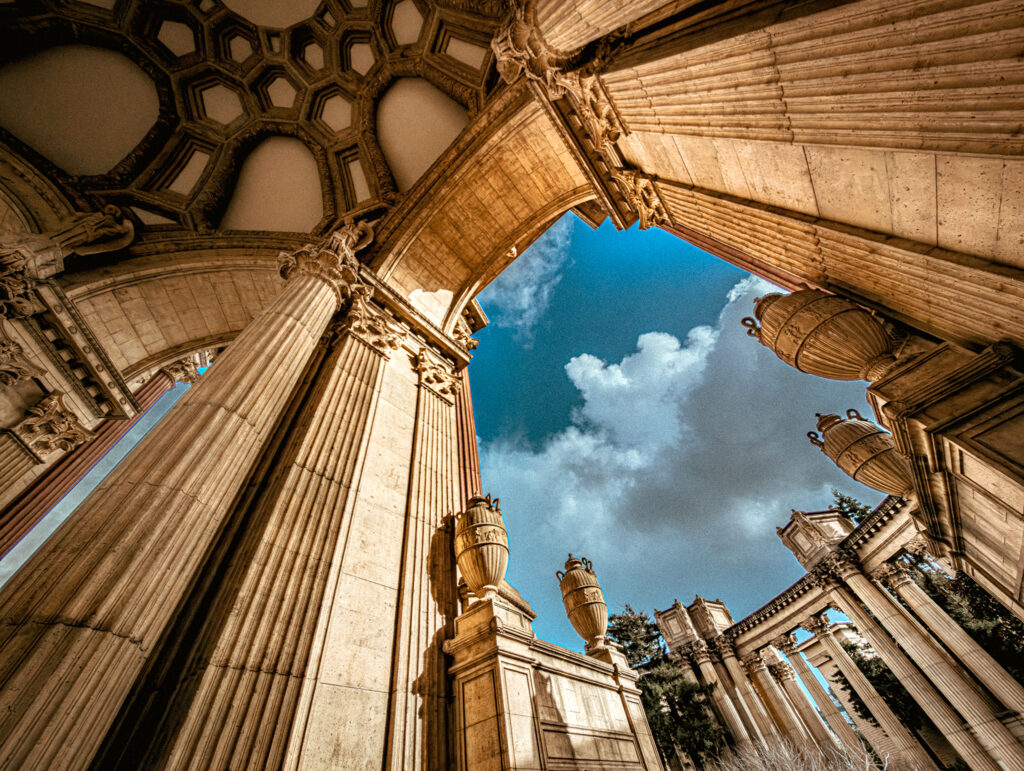
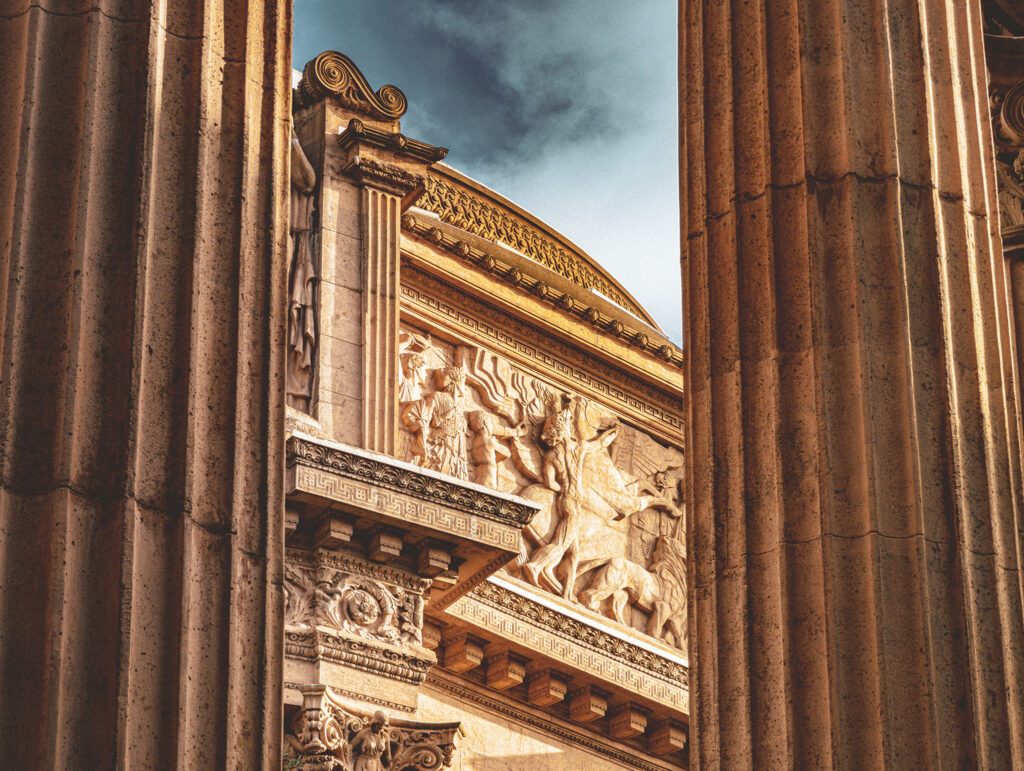
My impulse to become an architect probably originated with a monograph on Bernard Maybeck that I picked up in some bookstore’s remainder bin. Years later, after architecture school and my various abortive adventures in the profession, I learned that as an apprentice architect to William Wright in St. Augustine, Florida, Maybeck probably was employed with the design and construction supervision of the1887 Princess Place Lodge in Flagler County. And of course the Princess Place eventually became the property of my namesake grandfather and the continuous backdrop for my childhood. I’m not sure what that coincidence implies — some sort of predestination, perhaps.
Incidentally, the Palace in San Francisco, a recreated semi-ruinous relic of the 1915 Panama–Pacific International Exposition world’s fair, is something of an anomaly in Maybeck’s oeuvre. It always seems to me less a work of arts-and-crafty Maybeck’s than a portion of the unearthly scenery from a Maxfield Parrish painting that somehow escaped the picture frame. I generally interpret Graeco-Roman all’antica architecture as an expression of immutable and often unchallengeable authority, but that doesn’t seem true for the Palace. It’s also composed of funeral motifs — note the mourning figures and sarcophagi, seemingly borrowed from Giovanni Battista Piranesi and Arnold Böcklin. But why then does the ensemble seem like a part of another, more-paradisiacal milieu than that conveyed through either i Carceri d’Invenzione or Die Toteninsel?
The Uber driver who took us to the Palace remarked that when he was a teenager in San Francisco in the Eighties, he and his friends would surreptitiously climb up onto the rotunda and the colonnades for the most magical of views of the city’s Fourth of July firework show over the Bay.
Leave a Reply